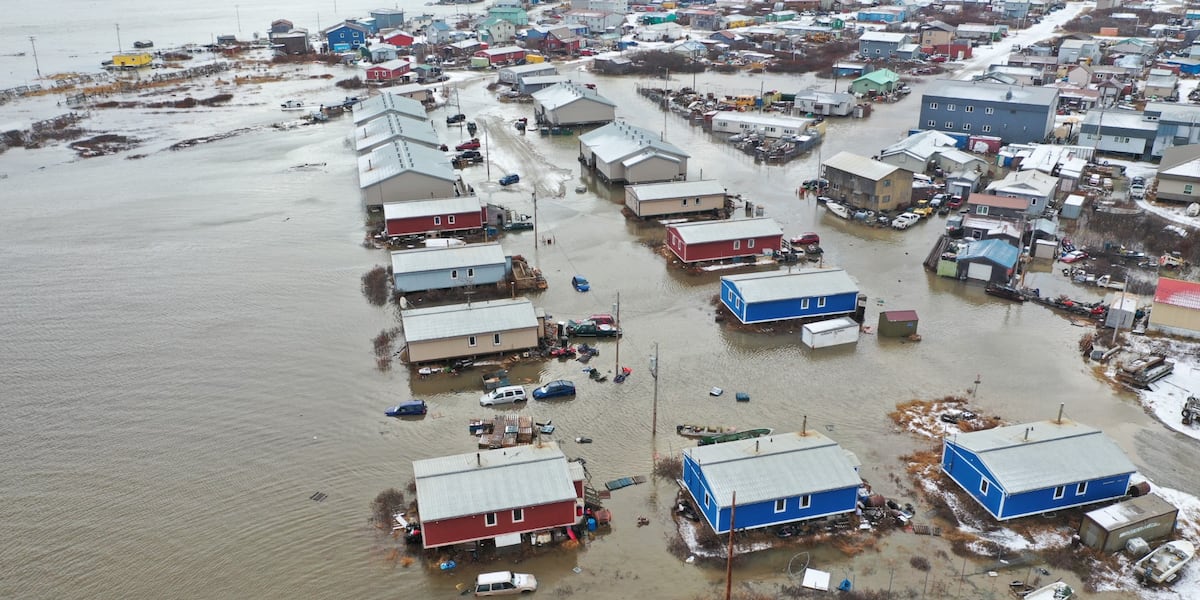Part of a continuing weekly series on Alaska history by local historian David Reamer. Have a question about Anchorage or Alaska history or an idea for a future article? Go to the form at the bottom of this story.
It was the middle of September 1907, and Charles Edward “Eddie” Cone was done mining for the season and on his way south to Seward. The fatigue from a hard summer of prospecting lingered in his bones as he drove his dog team down the trail, but the bag of gold safely packed away on the sled made it all worthwhile. Finally, he decided to stop for the night. The nearest roadhouse lay along the Yentna River, near Lake Creek, an area now dotted with lodges. From there, the Yentna flows southeast to the Susitna River, which empties into the Cook Inlet west of Anchorage.
Cone (1862-1938) was a miner, poet, and, on one occasion, actor. A fortune hunter of that era could rarely afford to focus on one endeavor. Any given prospector might also be a cook, day laborer, guide, trader, writer, lawyer, or politician. Martin Itjen of Skagway was a miner and tour guide. However, poet was one of the less common alternative vocations. Robert Service, for example, was a poet and banker but not a miner.
[How Alaska’s first tour guide, a holdover from the Klondike gold rush, developed his famous Skagway spiel]
This particular roadhouse was built and operated by Jack Kenney, a former railroad worker to that point in possession of a generally sterling reputation. Cone entered and set behind the counter a poke filled with as much as $3,000 worth of gold. Leaving aside the varying price of gold in the more than century since, $3,000 then is very roughly equivalent to $97,000 in 2023.
Cone ate and socialized, and when it was time for sleep, he went to retrieve his gold, but the poke was nowhere to be found. Kenney and the several other travelers present that day all protested their innocence. Cone was not a violent man, though he was possibly outnumbered if it came to that. There may have been one thief or a team of collaborators. As far as Cone knew, they had all worked together. So, he left and journeyed to Susitna Station, where he gathered about 15 men to form a vigilance committee.
Vigilance committees are an overly romanticized aspect of American history, especially in the American West. Also known as miners’ courts, vigilante posses, lynch mobs, and several other synonyms of varying positivity, vigilance committees were quite simply private citizens taking the law into their own hands, often in violent ways and usually in the absence of law enforcement alternatives. In other words, they were just mobs, albeit mobs with pretensions, that dispensed questionable “frontier justice.” Such citizen violence occurred in many countries, but as historian Andrea McDowell noted in a 2007 journal article on the subject, “Only in America, however, was it widespread and socially acceptable.” Mark Twain, in a moment of seriousness, called America “The United States of Lyncherdom.”
In mining camps, a vigilance committee might include every adult male present. In larger populations, they were typically comprised of and led by the more respected or prominent residents of the area. Decisions were most often made by majority votes and thus enjoyed widespread approval amongst other settlers. There was an innate pragmatism with vigilantism in areas where the authorities were absent or corrupt. “Self-preservation is the first law of nature” was a phrase commonly used by 1850s Californian vigilance committees. As such, most settlers believed that miner’s courts and vigilance committees were legal in as far as they represented the will of the people, but that is a convenient conclusion. It benefits the mob to believe that mobs are correct.
Citizen vigilantism was less popular with Indigenous and minority populations, groups frequently scapegoated for unrelated issues, broadly condemned for the actions of a few members, or simply in the way of natural resources. There was little to no difference between vigilance committees and the mobs that drove Chinese residents out of Tacoma, Washington in 1885 and Juneau in 1886. In 1915, an allegedly intoxicated Mexican cannery worker stabbed Wrangell fire department chief Oscar Carlson. The citizens of Wrangell posted a notice around town warning all Mexicans to leave within 24 hours or they would be hanged. As the Nome Nugget declared, “nearly fifty Mexicans who had congregated in the town after working all season in the canneries promptly shook the dust of Wrangell from their shoes, and left town in small boats or any kind of craft which could be made to float.”
The 1850s San Francisco Committee of Vigilance and the 1898 Skagway Committee of 101 were formed to combat organized crime and are among the most notable examples of vigilance committees. Some vigilance committees were more formal and endured for months, years even. In 1851, the San Francisco Committee of Vigilance whipped one individual, banished 28, and executed four. But many vigilance committees existed briefly in response to singular, serious crimes, like cattle rustling or murder.
[Read more ‘Histories of Alaska’ columns]
In 1907, law enforcement in Alaska was sparse and scattered, primarily consisting of the few towns with a police force and the sporadic presence of the military, U.S. Marshals, and Revenue Cutter Service. While there is no reliable data on the crime rate in early American Alaska, such evidence for the broader American West strongly suggests that crime there was at worse equivalent to that in the eastern cities, if not less. New arrivals in Alaska were certainly not above bending the law here and there, or ignoring an inconvenient regulation, but crime and criminals were definitely frowned upon. Rest assured, it is far more charming to read tales of Alaska gangsters like Jefferson “Soapy” Smith than to live in the same town with them.
Even Anchorage, established well after the peak of vigilance committees in Alaska, had some moments of citizen vigilantism. By late March 1915, there were already hundreds of people gathered along the shores of Ship Creek, not so patiently waiting for railroad and railroad-related work. These largely migrant laborers were so sure of the location and its potential that they arrived on site before the Alaska Engineering Commission and even before the railroad route was finalized.
Many of the most successful members of the Klondike Gold Rush sold goods and services to prospectors rather than prospecting themselves. They mined the miners, in other words. In the same way, the Anchorage settlers included several who had no intention of laying track for the railroad. There were cooks, laundry workers, and, of course, more adult service providers.
Around the beginning of April 1915, before the arrival of Marshals or soldiers, a miner’s court convened to expel “a woman alleged to be of the underworld.” She was not exactly unwelcome in town, but she had set up shop in the very heart of the new tent city, which was too public for some to bear. More than 40 men convened a miner’s court, ruled that she had to leave, then selected a committee that politely asked her to relocate to a more private location. After making the men sweat her decision for a day, the unnamed woman moved her cabin. A full redlight district would eventually develop in what is now the South Addition neighborhood.
As for Cone and his missing gold, he returned to the Lake Creek roadhouse with his posse. Everyone there was interrogated. Two departed men were tracked down, questioned, and searched without finding the gold. Everyone again claimed innocence. Suspicion centered on Kenney. While others had access to the room with the gold, Kenney had the most time and opportunities to relocate the poke. Despite the complete lack of evidence, the vigilance committee was convinced he was guilty, so they fetched a rope.
The story of what happened that day was told several times in different ways over the years, but a hanging happened in all of them. According to the most common version of events, the posse strung Kenney up. After Kenney quit moving, they assumed he was dead and cut him down. To their utter surprise, Kenney gasped and moved upon the ground. He had survived. The men debated whether to hang him again but banished him from the region instead. Kenney was bound, tossed into a boat, and hauled away, leaving his roadhouse and belongings behind. As the story passed around Alaska, the tale grew such that in one telling Kenney survived three hangings.
Already a footnote in the history of Alaska, the events at the roadhouse might have been forgotten entirely, except that Kenney refused to accept his exile. He sued the men involved, excluding Cone, for $25,000 in damages, very roughly $800,000 in 2023 money. As the Valdez newspaper noted, “Kenney thinks he is entitled to $25,000 for having his neck stretched without warrant of law.”
During the trial in Valdez, Kenney said, “I was greatly hurt, bruised, sick, sore, lame and suffered great pain for a long time afterward, both in mind and body. My nervous system received a severe shock, whereby both my physical and mental faculties have been impaired ever since, and I am in fear permanently, thereby diminishing my capacity to earn a living.” In the spring of 1910, five of the men who had held the rope that day were ordered to pay Kenney $1,500 each in damages.
Cone never recovered his gold but went on to make and lose a few more fortunes prospecting during his long and generally happy life. He was also a successful poet with an earned nickname: the Bard of the Kuskokwim. His poems were published in several magazines and collected in the 1923 book, “Beyond the Skyline.” In the fall of 1917, he was in Anchorage when the small crew for the feature film “The Girl Alaska” arrived in town. Like many other residents, Cone played a role in the film, an old prospector named Sandy Allen. But that movie, with its cross-dressing lead and place in Anchorage history as the first real movie at least partially shot here is a story for a future article.
• • •
Key sources:
Baron, Christi. “C. Edward Bone…West End Pioneer.” Forks Forum, April 15, 2021.
“Hang Man to Get Confession.” Seward Gateway, September 21, 1907, 2.
“Hanged Three Times and Smiles.” Nome Daily Nugget, January 27, 1908, 4.
McDowell, Andrea. “Criminal Law Beyond the State: Popular Trials on the Frontier.” Brigham Young University Law Review 2007, no. 2 (2007): 327-386.
McGrath, Roger D. “A Violent Birth: Disorder, Crime, and Law Enforcement, 1849-1890. California History 81, no. 3/4 (2003): 27-73.
Mielke, Coleen. “Mystery of the Lake Creek Hanging.” Researching Our Alaska Family Roots, 2022.
“Miners Organize to Give Law.” [Juneau] Alaska Daily Empire, April 28, 1915, 2.
“No Watchful Waiting in Alaska.” Wrangell Sentinel, September 30, 1915, 2.
Untitled article. Nome Nugget, December 8, 1915, 2.
Untitled article. [Valdez] Alaska Prospector, December 12, 1907, 12.

:quality(70)/cloudfront-us-east-1.images.arcpublishing.com/adn/CX2BK2TLJNCHRFITFC6QKAONUQ.jpg)


















/cdn.vox-cdn.com/uploads/chorus_asset/file/25822586/STK169_ZUCKERBERG_MAGA_STKS491_CVIRGINIA_A.jpg)

/cdn.vox-cdn.com/uploads/chorus_asset/file/25821992/videoframe_720397.png)




/cdn.vox-cdn.com/uploads/chorus_asset/file/23935558/acastro_STK103__01.jpg)